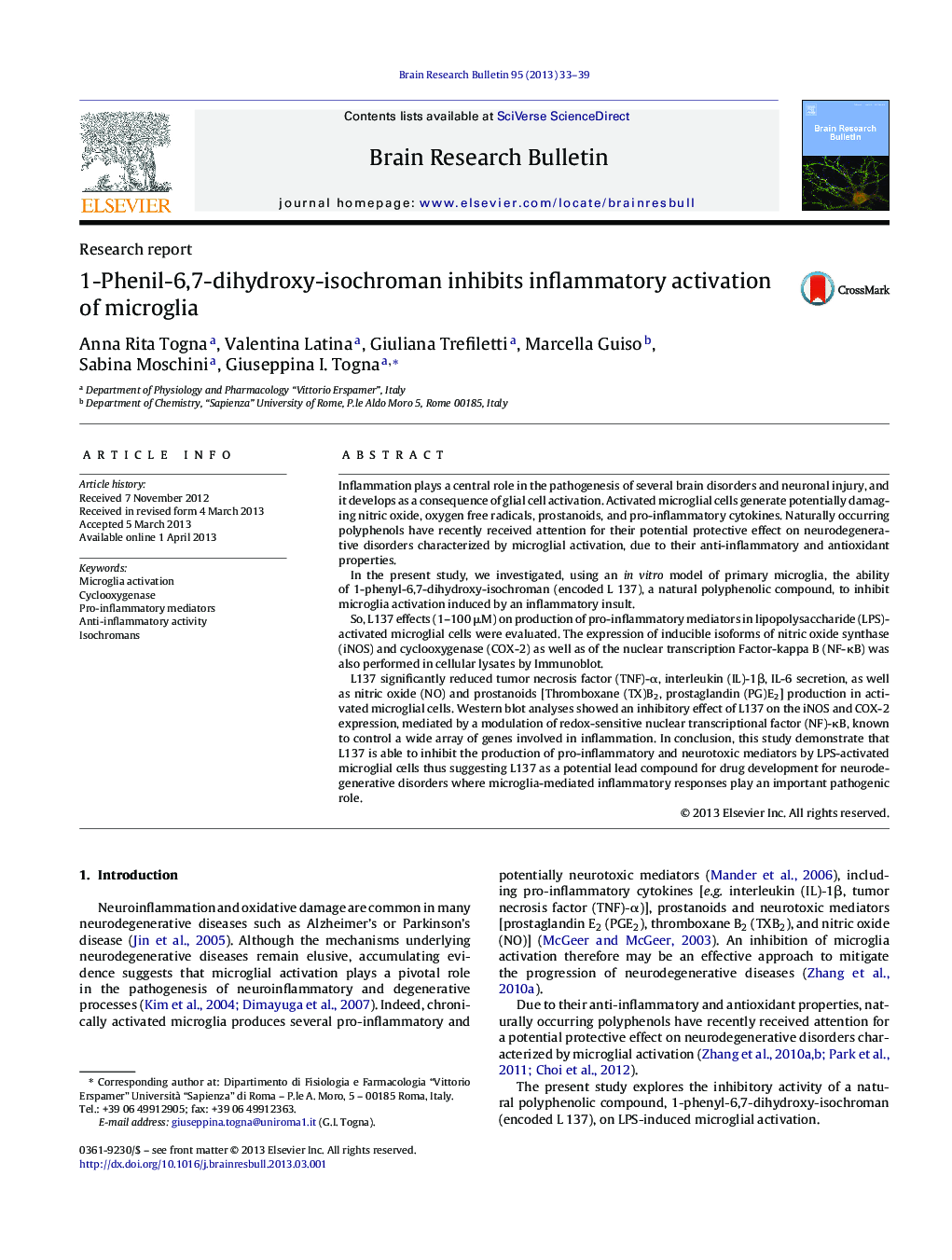| کد مقاله | کد نشریه | سال انتشار | مقاله انگلیسی | نسخه تمام متن |
|---|---|---|---|---|
| 6261898 | 1613260 | 2013 | 7 صفحه PDF | دانلود رایگان |
- L137 prevents pro-inflammatory mediator production by activated primary rat microglia cells.
- L137 reduces LPS-induced inflammatory response in microglial cells.
- Effects of 1-phenyl-6,7-dihydroxy-isochroman on microglial cell activation.
- Anti-inflammatory effects of 1-phenyl-6,7-dihydroxy-isochroman on microglial cells.
- L137 as potential lead compound for the development of anti-inflammatory and potentially neuroprotective agents.
Inflammation plays a central role in the pathogenesis of several brain disorders and neuronal injury, and it develops as a consequence of glial cell activation. Activated microglial cells generate potentially damaging nitric oxide, oxygen free radicals, prostanoids, and pro-inflammatory cytokines. Naturally occurring polyphenols have recently received attention for their potential protective effect on neurodegenerative disorders characterized by microglial activation, due to their anti-inflammatory and antioxidant properties.In the present study, we investigated, using an in vitro model of primary microglia, the ability of 1-phenyl-6,7-dihydroxy-isochroman (encoded L 137), a natural polyphenolic compound, to inhibit microglia activation induced by an inflammatory insult.So, L137 effects (1-100 μM) on production of pro-inflammatory mediators in lipopolysaccharide (LPS)-activated microglial cells were evaluated. The expression of inducible isoforms of nitric oxide synthase (iNOS) and cyclooxygenase (COX-2) as well as of the nuclear transcription Factor-kappa B (NF-κB) was also performed in cellular lysates by Immunoblot.L137 significantly reduced tumor necrosis factor (TNF)-α, interleukin (IL)-1β, IL-6 secretion, as well as nitric oxide (NO) and prostanoids [Thromboxane (TX)B2, prostaglandin (PG)E2] production in activated microglial cells. Western blot analyses showed an inhibitory effect of L137 on the iNOS and COX-2 expression, mediated by a modulation of redox-sensitive nuclear transcriptional factor (NF)-κB, known to control a wide array of genes involved in inflammation. In conclusion, this study demonstrate that L137 is able to inhibit the production of pro-inflammatory and neurotoxic mediators by LPS-activated microglial cells thus suggesting L137 as a potential lead compound for drug development for neurodegenerative disorders where microglia-mediated inflammatory responses play an important pathogenic role.
Journal: Brain Research Bulletin - Volume 95, June 2013, Pages 33-39
